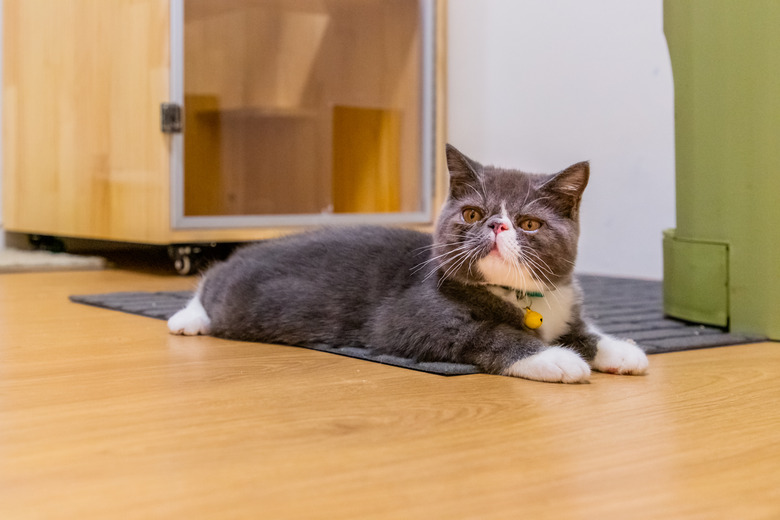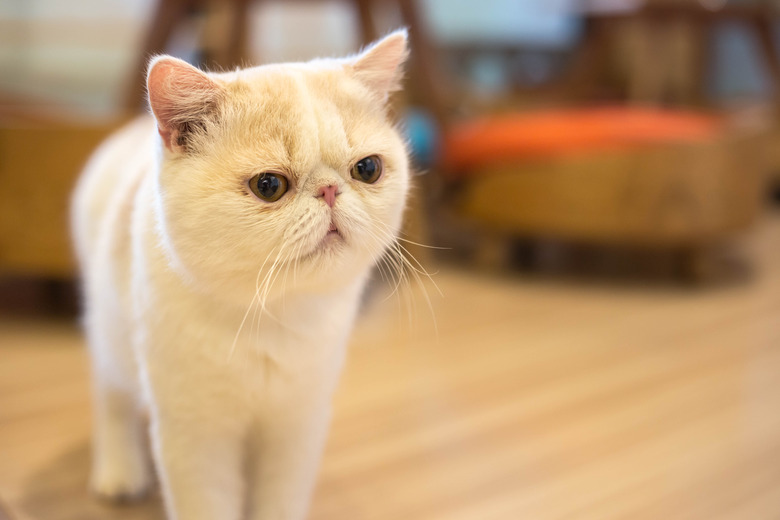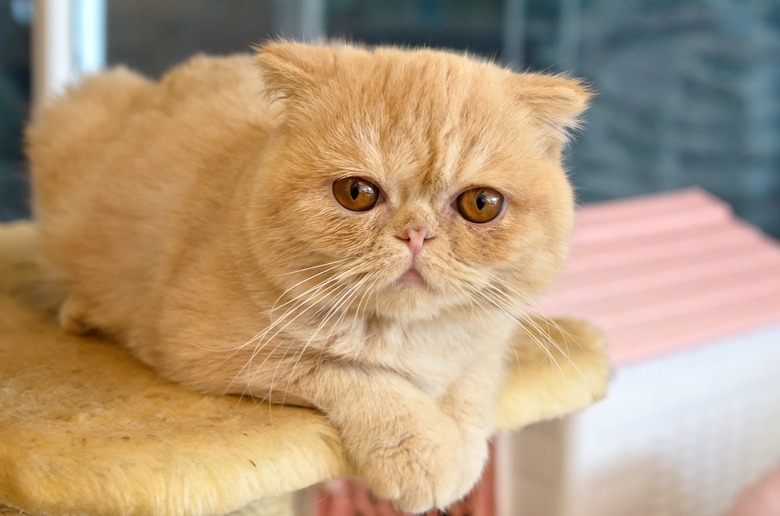Exotic Cat Breed Characteristics
Exotic cat quick facts
Exotic cat quick facts
Length: 11 – 16 inches
Weight: Females: 6 to 10 pounds, Males: 7 to 14 pounds
Lifespan: 12 – 16 years
Coat length: Short
Coloring: All coat colors and patterns
Grooming needs: Medium
Friendliness: Breed alone is not an accurate predictor of individual cats' personalities. However, exotic shorthair cats are generally regarded as quiet and gentle.
Developed as a cross between an American shorthair and a Persian cat, the exotic shorthair cat has the stunning looks of a Persian cat but with fewer grooming requirements. The breed has a plush coat that makes cuddling with these affectionate cats a joy. Exotics tend to be very quiet, but you are sure to be drawn in by their large, expressive eyes. If you are looking for a laidback cat to join your family, the exotic cat may be a great choice. Carefully consider the breed's personality, care requirements, and health concerns before bringing a new exotic kitten into your home.
Exotic cat history
Exotic cat history
The exotic cat breed is a new breed that was developed in the 1950s when cat breeder, Carolyn Bussey, crossed a Persian cat with an American shorthair. Her goal was to create a brown Persian, and while she didn't achieve that goal, she was pleased with the resulting kittens.
American shorthair breeders also crossed an American shorthair with a Persian cat. Their goal was to get bring the silver coloring and green eyes to the American shorthair breed. While the resulting kittens did have the silver color, they had a body type and face that resembled the Persian breed rather than American shorthairs. Breeding programs used outcrosses with Burmese and Russian blue cats to obtain the desired coloring.
The breed was originally called Sterling but was later changed to exotic. All coat colors and patterns are accepted, including calico and tabby. The Cat Fanciers' Association (CFA) granted exotics championship status in 1967. With the exception of their short coat, exotics have much the same breed standard as the longhair Persian cats. Some of the breed's most prominent characteristics include:
- large, round eyes
- round head
- flat face
Exotic cat personality
Exotic cat personality
The exotic shorthair personality is endearing and affectionate. This breed of cat tends to be quiet and gentle. They vocalize with chirps and a pleasant meow, although they don't speak often. They love cuddles and enjoy being lap cats. This laidback breed gets along well with all members of the family, including other pets and small children.
Kittens are very playful and while adult cats tend to be much less active, they still enjoy playing with simple toys. A crumpled ball of paper can provide plenty of entertainment for the cats. You may even find them mesmerized by dripping water.
Exotic cat lifespan and health issues
Exotic cat lifespan and health issues
A healthy exotic cat can live into their teens. The breed can experience health problems primarily because they are brachycephalic, which means they have a short head or short nose. Since their respiratory tract is shorter than other cat breeds, exotics are more prone to overheating as well as difficulty breathing or other respiratory issues. In addition, the cats have large eyes that protrude slightly. This leaves them susceptible to eye injuries.
Exotic cat grooming and care
Exotic cat grooming and care
The exotic cat has the nickname "lazy man's Persian" for a reason. The cats have a beautiful, plush coat with a thick undercoat that rarely tangles or mats and is very low maintenance. Weekly brushing is recommended to remove loose hair. Brush the cat more frequently in the spring when the cat is shedding.
Other grooming tasks include:
- checking and trimming the cat's nails
- cleaning the cat's ears
- brushing the cat's teeth with a veterinarian-approved pet toothpaste
While you only need to brush the exotics coat once per week, their eyes and face need daily attention. Use a soft, clean cloth to clean their eyes. This removes the dirt that may irritate the eye and prevents tear stains. Also, wipe any dirt from the folds on the cat's face.
Feed the cat a high-quality commercial cat food as recommended by your veterinarian. Some exotics are prone to obesity, so avoid a free-feeding diet. Make sure the cat has fresh drinking water available at all times. For safety, keep your cat indoors. This reduces the risk of injury and keeps the cat out of the heat.
Welcoming a new cat into your home
Welcoming a new cat into your home
Picking out a new exotic kitten to join your household is an exciting event and waiting for them to be ready to come home can be a challenge. But there is plenty to do to make sure your home is ready to welcome the new kitten. Start by cat-proofing your home to make sure it is safe. Remove any poisonous plants and small items like rubber bands that your new kitten may choke on.
Prepare a single room where your new cat can get comfortable in their new surroundings. Make sure you close off any small spaces, such as under a rocking chair or gaps between large pieces of furniture like bookshelves, where your new cat may get stuck or injured. Set up the room with all of the supplies your cat may need including:
- food and water
- litter box
- cat tree
- cat toys
Allow your new cat to explore the room at their own pace. It is a good idea to sit with your new cat, talk to them, and offer to play. However, you shouldn't hold them and make them be petted. Instead, offer plenty of positive reinforcement and wait for them to come to you for affection — when they are ready.
If you have other pets in the household, introduce them slowly. Make sure it is a good experience for both pets. When your new cat is ready, you can open the door and allow them access to the rest of the house. Before you know it, the affectionate exotic cat will be accompanying you around the house. They will enjoy cuddles and affection when you relax at the end of the day.



